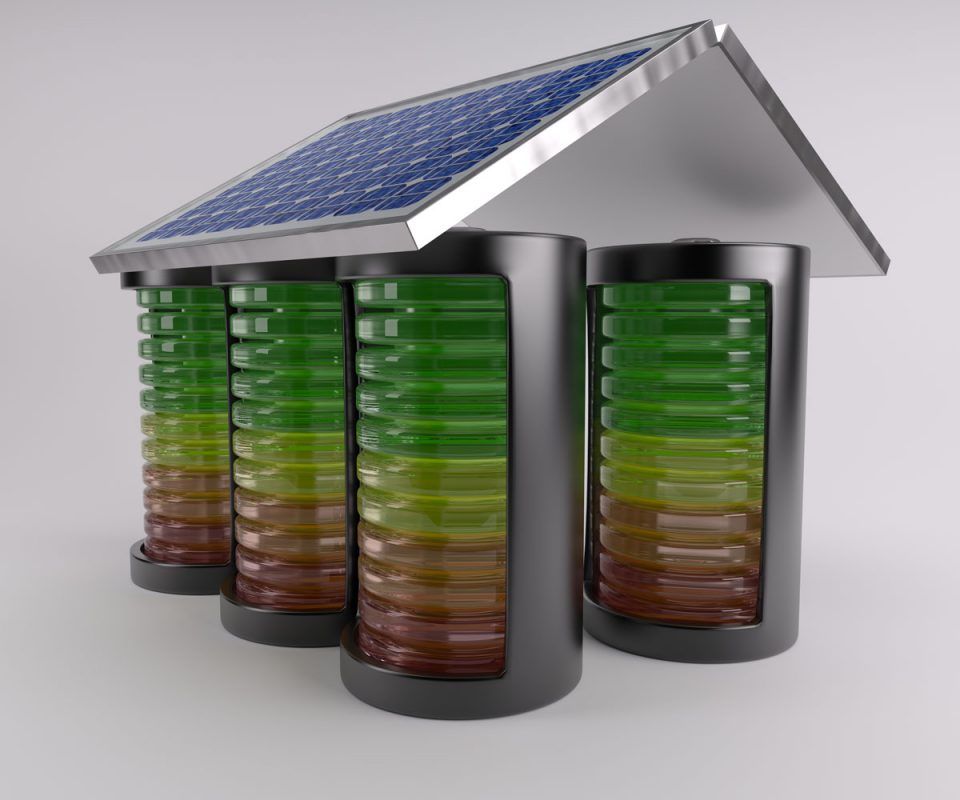Sometimes two is better than one. The coupling of solar energy and storage technologies is one such example. The reason: Solar energy is not always produced when energy is most needed.
Peak hours, often occur in the afternoons and summer evenings, when solar energy generation is declining. Temperatures can be the hottest during these times, and people who work during the day come home and start using electricity to cool their homes, cook, and run appliances.
Storage allows solar energy to contribute to the power supply even when the sun does not shine. It can also help reduce variability in how solar energy flows through the grid. These variations are attributable to changes in the amount of sunlight that shines on photovoltaic (PV) panels or concentrated solar thermal (CSP) systems. Solar energy production can be affected by season, time of day, clouds, dust, fog or obstacles like shadows, rain, snow and dirt.
Sometimes energy storage is co-located with, or placed next to, a solar energy system, and sometimes the storage system stands alone, but in either configuration, it can help more effectively integrate solar into the energy landscape.
What Is The Energy Storage?
“Storage” refers to technologies that can capture the electricity, store it as another form of energy (chemical, thermal, mechanical), and release it for use when required. Lithium-ion batteries are part of that.
Although using energy storage is never 100% efficient—some energy is always lost in converting energy and retrieving it—storage allows the flexible use of energy at different times from when it was generated. Thus, storage can increase the efficiency and resilience of the system, and it can enhance the quality of energy by matching supply and demand.
Storage facilities differ in both energy capacity, which is the total amount of energy that can be stored (usually in kilowatt-hours or megawatt-hours), and power capacity, which is the amount of energy that can be released at a given time (usually in kilowatts or megawatts).
Different energy and storage power capabilities can be used to handle different tasks. Short-term storage that lasts just a few minutes will ensure a solar plant operates smoothly during output fluctuations due to passing clouds, while longer-term storage can help provide supplies over days or weeks when solar energy production is low or during a major weather event, for example.
Advantages of Combining Storage and Solar
- Balancing electricity loads – Without storage, electricity must be generated and consumed at the same time, which may mean that grid operators take some generation offline, or “curtail” it, to avoid over-generation and grid reliability issues. Conversely, there may be other times, after sunset or cloudy days, when there is little solar generation but a lot of energy demand. Enter storage, which can be filled or loaded when production is high and energy use is low, and then distributed when load or demand is high. When some of the electricity produced by the sun is stored, that electricity can be used when grid operators need it, even after sunset. That way, storage acts like an insurance policy for the sun.
- “Firming” solar generation – Short-term storage ensures that rapid changes in generation do not significantly affect the production of a solar power plant. For example, a small battery can be used to ride through a brief generation disruption from a passing cloud, helping the grid maintain a “firm” electrical supply that is reliable and consistent.
- Providing resilience – Solar and storage can provide backup power during an electrical disruption. They can keep critical facilities active to ensure the continuity of critical services, such as communications. Solar and storage can also be used for microarrays and smaller-scale applications, such as mobile or portable power units.
Reference: https://www.energy.gov/eere/solar/solar-integration-solar-energy-and-storage-basics


